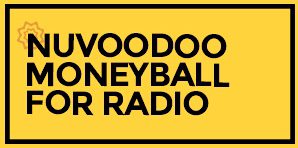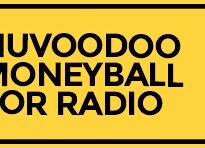Moneyball: Live vs Local vs Relevant


PPM measurement taught us that non-music content needed to be limited and carefully controlled to minimize tune-out. Even before the mobile Internet became as ubiquitous as it is today, consolidation meant that larger radio companies could deploy their best talent to do “local” shows across stations around the country. The best of those performers use resources available on the Internet to do show prep for distant markets and stay in touch with local management to have a finger on the pulse of a distant market.
The pressure to maintain profitability in the face of a difficult revenue environment has led to cutbacks so that fewer performers are doing more shows in more markets – sometimes erasing the opportunity to do diligent local show prep and/or being recorded days in advance. The result is less localization and fewer opportunities to maintain the illusion of being “live.”
Radio remains free and “free” is important to some. But, there are free, ad-supported versions of DSPs. While the ads in those versions can get repetitive, the commercial loads are lower than on broadcast radio. And, yes, the free versions of those services limit the number of songs you can skip, but the algorithms are improved by every skip.
As we’re also becoming accustomed to being able to skip an ad on YouTube after five seconds, a 60-second radio commercial – especially one with bad creative – is an eternity. Of course, we need fewer commercials, but shorter commercials would be an improvement and BETTER commercials would be amazing. Stations like WEBN/Cincinnati used to sneak genuinely funny fake commercials into spot breaks, teaching listeners to stay through commercial breaks because something fun might happen. Podcasts are quickly learning what radio learned decades ago: spots read by the hosts draw in listeners and generate results.
Listeners generally don’t care whether hosts are local or live (or in some cases whether they’re there at all). Many listeners are just hoping to hear some songs they like before commercials come up. If the host is entertaining or informative, that would be a plus. If their comments are recent enough to sound live, that ups the chance that their comments will be relevant. If their comments are about the local market that also makes them more likely to be relevant.
Today it’s more important that what’s on the air is relevant than that it sounds perfect or even professional. When everything is produced with beds and sound effects and stings, a lone human voice cuts through like a knife. When everyone is excited and talking fast, a pleasant conversational approach stands out. Most importantly, working to make what’s on the air relevant to a station listener, working to make it unique and interesting, working toward connection with the listener is critical.
Determine the local issues and interests of your audience and get involved on and off air. Find out what makes them proud of your market and reflect that on the air. Make contact with listeners. Reply to emails and texts. Respond to comments on social media. Answer the phone. If you can’t afford focus groups, set up a listener advisory panel and talk to them in-house. If you’re too busy to set up a listener advisory panel, talk to them at community events or at paid appearances for clients – keeping in mind that those folks will probably be kinder and more enthusiastic than the average listener.
Make sure what you learn from listeners gets reflected on the air every hour — hopefully more often. If the programming elements most likely to tell listeners what market the station serves are the commercials, you have room to improve the relevance of your programming. Getting this local information on the air means spreading that information and what to do with it through your air staff — even when those staffers are people you never see because they live 600 miles away from your station and record their shifts from home. It’s not easy, but it’s important.
You have to play the ratings game to build ratings, but you have to serve your local community to remain relevant in the long run.




